Crabs come in all shapes and sizes, from tiny pea crabs to giant monsters with legs spanning over 12 feet But what is the biggest crab species on the planet? Let’s take a look at some of the largest crabs out there and find out which one claims the title of largest crab in the world.
The Contenders for Largest Crab
There are a few giant crab species that stand out as serious contenders for the largest crab
- Japanese Spider Crab
- Tasmanian Giant Crab
- Coconut Crab
- Giant Mud Crab
- Red King Crab
Below we’ll go through each one and look at their massive size and dimensions.
Japanese Spider Crab
The Japanese spider crab (Macrocheira kaempferi) is the largest known crab species in the world, This massive crustacean has a leg span that can reach up to 12 feet and weigh around 40 pounds!
Some key facts about the Japanese spider crab:
- Leg span from claw to claw can reach 12 feet.
- The body or carapace can grow to 16 inches wide.
- It can weigh up to 42 pounds!
- It has a rounded, orange body with long spindly legs.
- It inhabits waters around Japan.
The Japanese spider crab grows so large thanks to having three distinct larval phases before reaching adulthood. It takes several years to reach their enormous size.
So in terms of sheer size, the Japanese spider crab takes the prize for largest crab species.
Tasmanian Giant Crab
While not as large as the Japanese spider crab, the Tasmanian giant crab (Pseudocarcinus gigas) comes in a close second in terms of size.
Here are some stats on these giants:
- They can weigh up to 39 pounds.
- Their carapace or shell can reach 18 inches wide.
- Males are much larger than females.
- They inhabit waters off Australia.
So while not quite as massive as the Japanese spider crab, the Tasmanian giant crab has an impressively large size in its own right.
Coconut Crab
The coconut crab (Birgus latro) is the largest land-living crab species. Although it lives on land, it still grows to an incredible size.
- They can weigh up to 9 pounds.
- Leg span reaches up to 3 feet.
- They inhabit tropical islands in the Pacific and Indian Oceans.
- As the name suggests, they climb coconut trees.
For a land crab species, the coconut crab is amazingly large. While aquatic crabs grow larger, the coconut crab stands out for its massive size living on land.
Giant Mud Crab
As the name implies, the giant mud crab (Scylla serrata) reaches an epic size.
- Their carapace can be 11 inches wide.
- They can weigh over 11 pounds.
- They live in mangroves and estuaries.
The giant mud crab lives up to its name in terms of being a truly giant crab species.
Red King Crab
Lastly, the red king crab (Paralithodes camtschaticus) is another giant crab inhabiting cold northern waters.
- They can have a leg span over 5 feet.
- They can weigh up to 28 pounds.
- Their carapace reaches up to 11 inches wide.
- They live in the northern Pacific and Bering Sea.
While not quite as big as the Japanese spider crab, the red king crab has an impressively large size.
Verdict: Japanese Spider Crab is the Largest Crab
Based on the above contenders, the Japanese spider crab stands out as the definitively largest crab species in the world. With their massive 12 foot leg spans and 40+ pound weights, these marine giants claim the title of king crab. The Tasmanian giant, coconut, mud, and king crabs all have impressively large sizes, but the Japanese spider crab surpasses them all.
So if you’re looking for the biggest crab out there, look no further than the Japanese spider crab lurking in the depths off Japan. Just be sure to keep your distance, as these massive crustaceans could give you a nasty pinch with their strong claws!

Of Crabs and Rats
Palmyra Atoll is a naturalist’s wonderland, with so many creatures to capture your attention. There are manta rays and gray reef sharks, sea turtles and huge colonies of birds. And fish of every conceivable size and color. With all these charismatic species around, it might seem hard for an invertebrate to win anyone’s heart.
But the crabs hold their own.
In part, it’s because they’re everywhere. There are the strawberry hermit crabs patrolling the beaches, and little fiddlers darting into burrows. There are crabs outside your cottage, around the docks, and in mind boggling numbers at the food refuse pit (any food waste is eaten within hours).
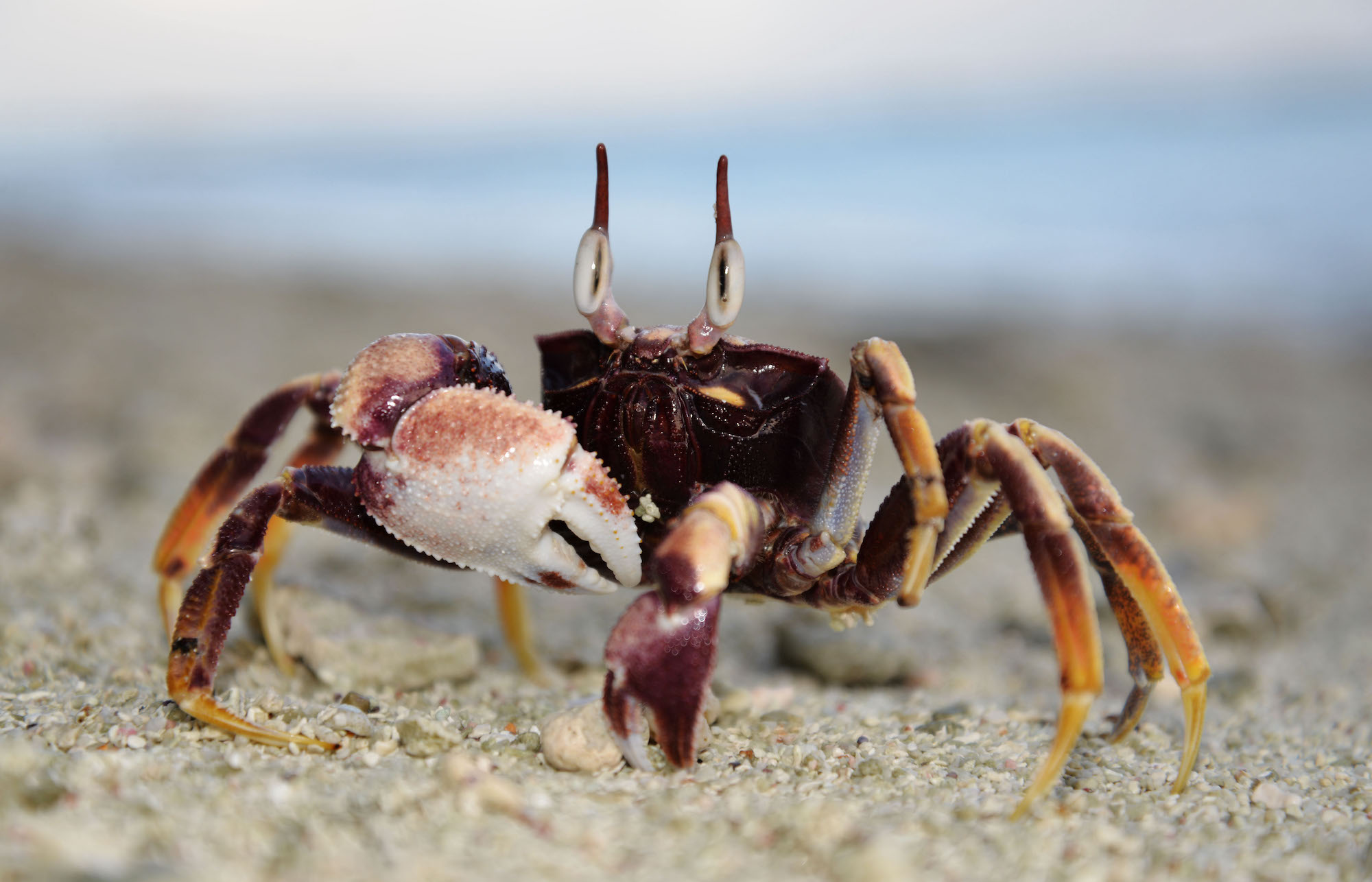
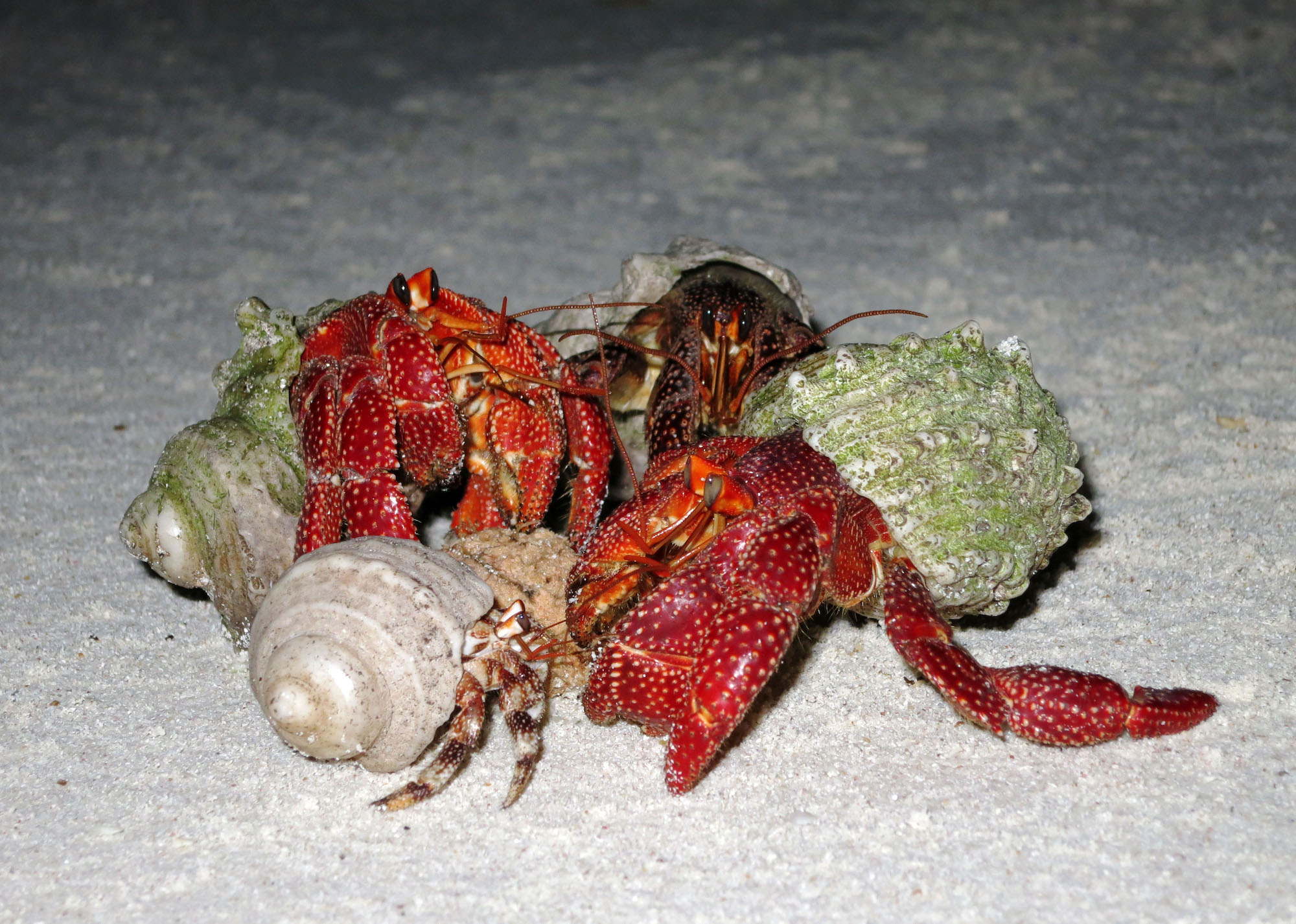
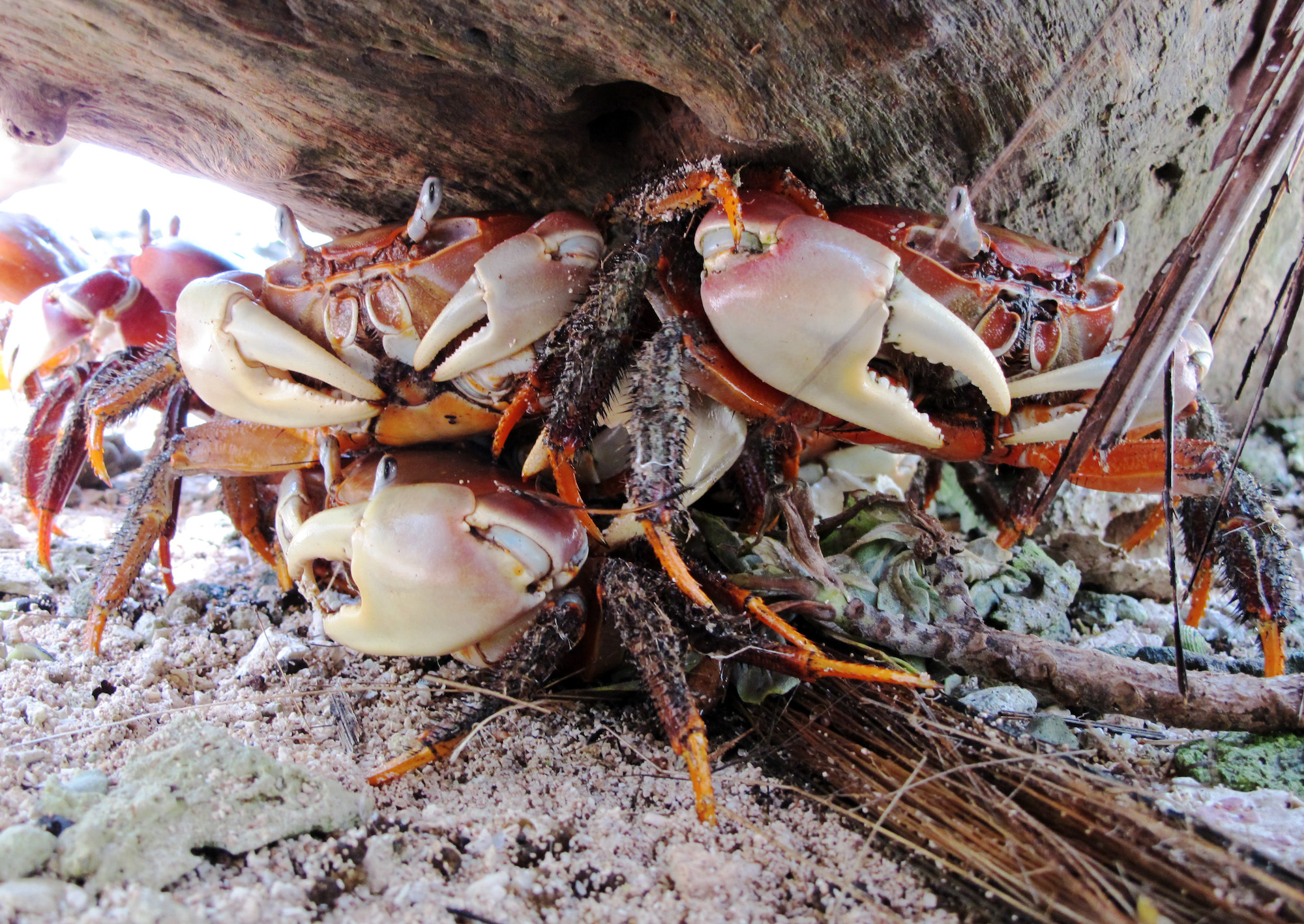
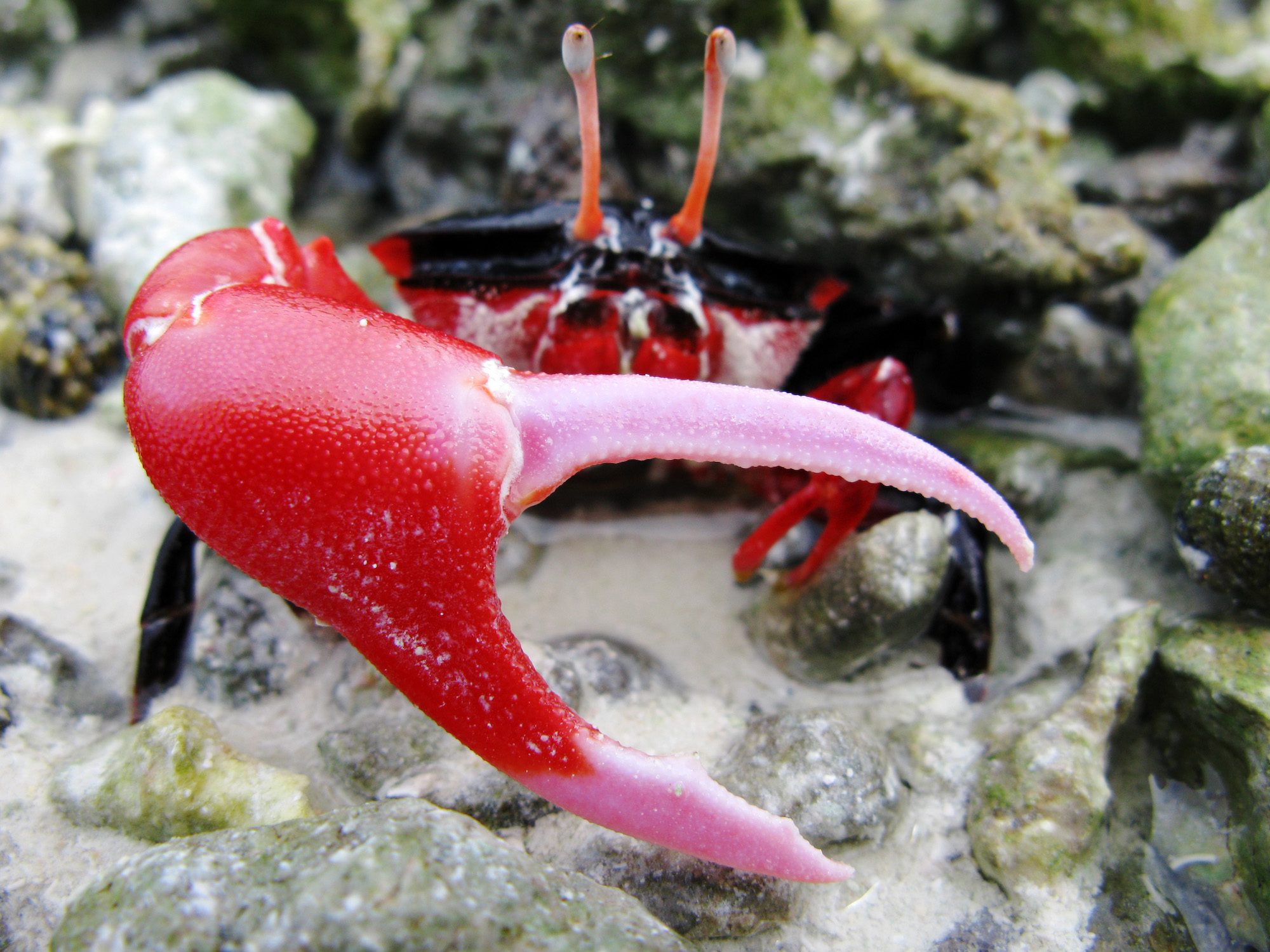
The coconut crab is the star, and a night-time crab walk will usually yield at least a few. U.S. Fish and Wildlife staff lead a weekly “crab walk” for visiting researchers and Palmyra’s seasonal staff. It’s a popular activity as the group attempts to see all 12 land crab species in an evening. Still, the coconut crab steals the show.
Seeing all these crabs, amidst this biological richness, it’s easy to call Palmyra Atoll a “pristine” environment. But that may be a bit misleading. Palmyra’s known history of human habitation is indeed fairly recent. Notably, it was a U.S. Naval base during World War II. The human presence now seems minimal, but that’s not the same as non-existent. People have caused significant impacts. Chief among those: rats.
Rats arrived, as they often do, on ships. They quickly began eating their way through Palmyra’s terrestrial biodiversity. Staff who worked on the island 10 or 20 years ago tell of the constant pitter-patter of rat feet through the trees and on roofs.
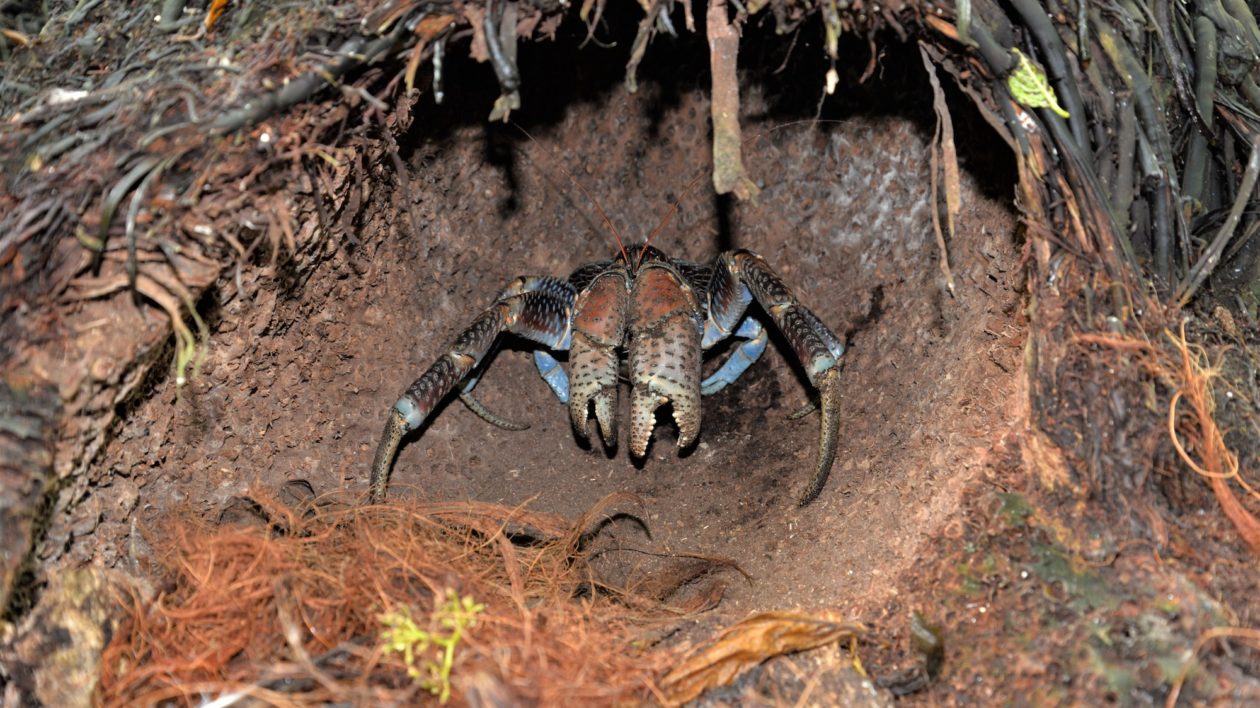
Rats are bad for island wildlife, a fact well established in too many islands around the globe. Many conservationists know they are hell on birds. They eat eggs and nestlings, devastating seabird colonies.
Less known is that invasive rats also devastate crab populations. Now, a coconut crab might seem a formidable foe for a rat, with its crushing claws and impressive strength. That’s true. Rats mainly don’t bother with adult crabs. They focus on the young crabs. With adult crabs living for decades, they persisted on Palmyra, but few young crabs survived.
In 2011, The Nature Conservancy, U.S. Fish and Wildlife Service and Island Conservation partnered to rid Palmyra of rats. It’s a success story environmental writer Ted Williams has called “the miracle on Palmyra.” The last science and technology allowed what had previously been thought an impossible dream: to eradicate every last rat on the island.
It worked. In 2015, Palmyra was proclaimed “rat free.”
Since then, several land crab populations have increased 450 percent. There are two species of tree crabs that researchers didn’t even know existed on Palmyra. They were first documented two years after rat eradication; now they are everywhere.
Coconut crab young are surviving. I often found coconut crabs scuttling away just a short distance from the research base.
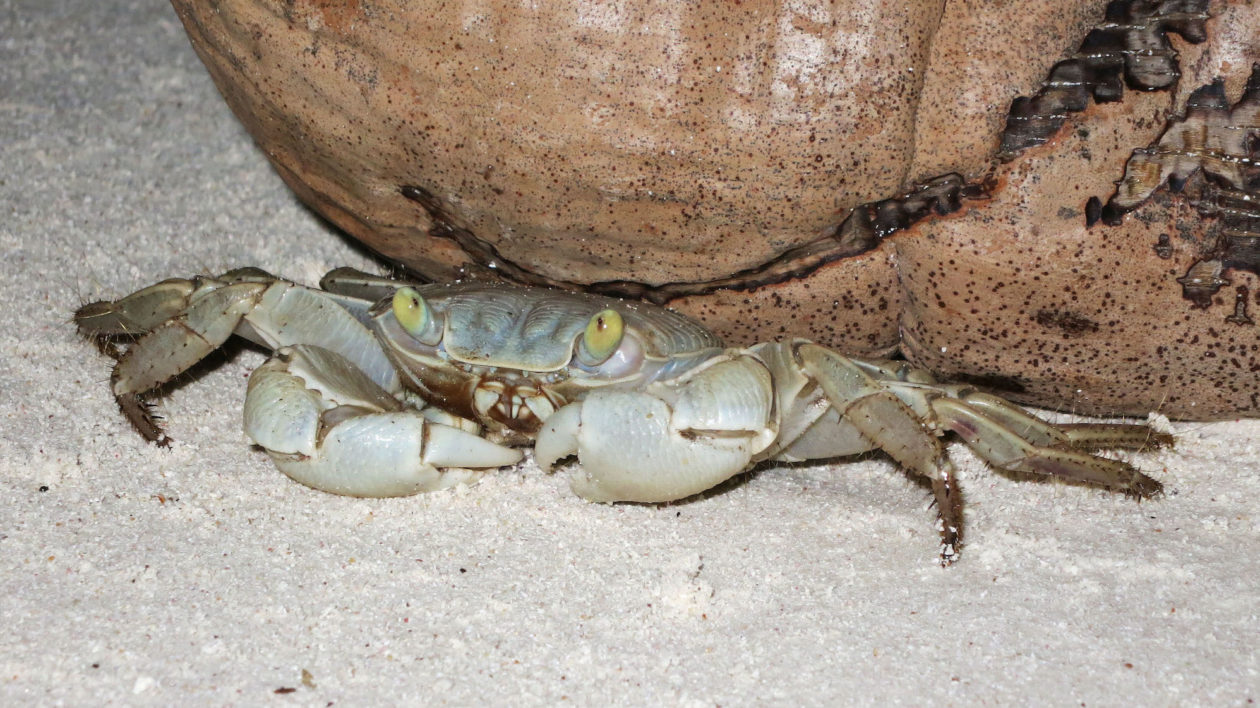
Life as a Coconut Crab
While a coconut crab will also skitter away when a human approaches, if you quietly move towards it, you can be rewarded with a lengthy observation. Up close, a coconut crab looks like a supersized version of a hermit crab, minus the shell.
That is actually the case: hermit crabs and coconut crabs are closely related. When coconut crabs are young, they live in shells in the same way as the hermit crabs you see in pet stores. As they get older, they abandon the shell and instead rely on their tough exterior for protection.
These are truly land crabs. The only time coconut crabs enter the water is when females release eggs into the ocean to start the larval process.
Unlike hermit crabs, they grow large. Very large. They can live for 60 years, with an adult measuring 3 feet across and weighing up to 9 pounds.
Then there’s that claw. Stories have long been told about the crab’s finger-crushing abilities. Recent research quantified that power. A crab can squeeze with a crushing force of 3000 newtons, or about 675 pound per square inch. Compare that to a lobster, which has a crushing force of 250 newtons.
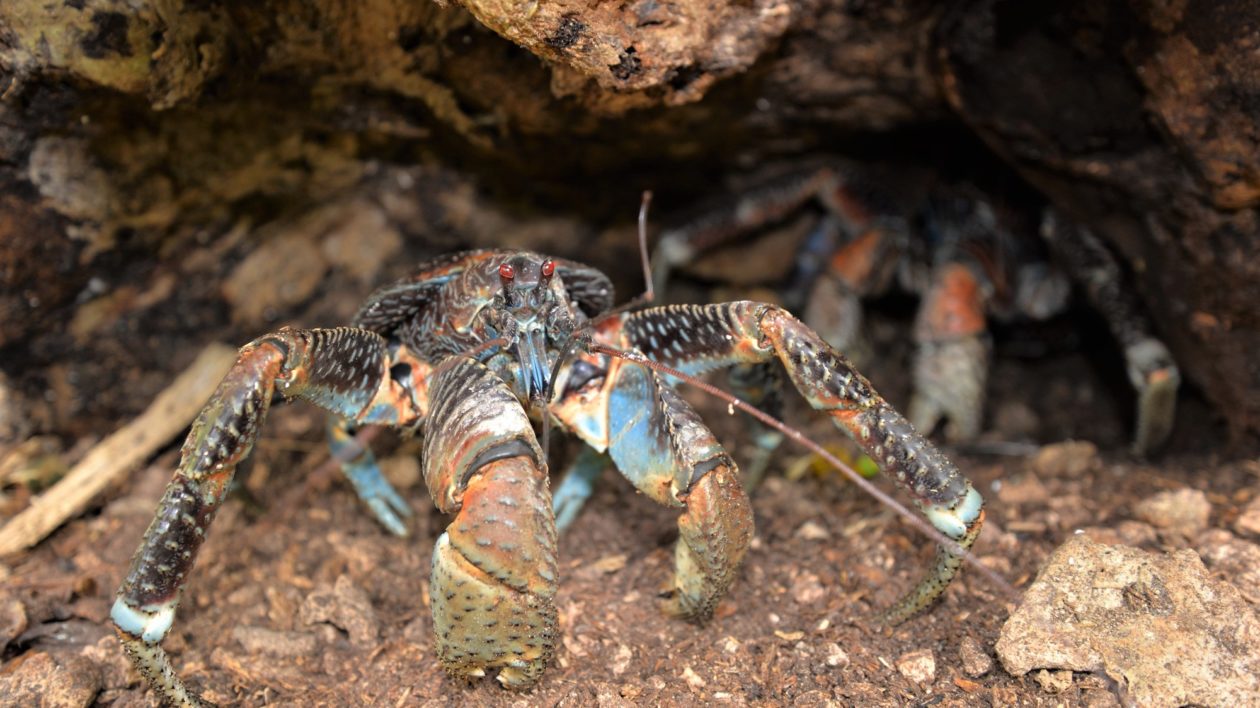
Coconut crabs can also lift more than 60 pounds, and yes, they can crush through coconuts. This has led to the idea that coconuts are the preferred food of this species, but that’s not really the case. Coconut crabs are scavengers and opportunists. They eat primarily fruits, nuts and the pith of fallen trees, but will also eat carrion. On Palmyra, they actively hunt prey, especially other crabs.
They’re also commonly known as robber crabs, partly for this tendency to eat just about anything and partly because they will also carry away items humans leave outside. Colorful stories abound, including one where a crab carried off a full whiskey bottle. Unlike, say, a pack rat, the coconut crab is not stealing shiny objects. Rather, it’s likely related to the crab’s excellent sense of smell. As the animals move around at night or dark rainforest, it relies on keen scenting abilities to find food. Human objects with a trace of food are thus carried off.
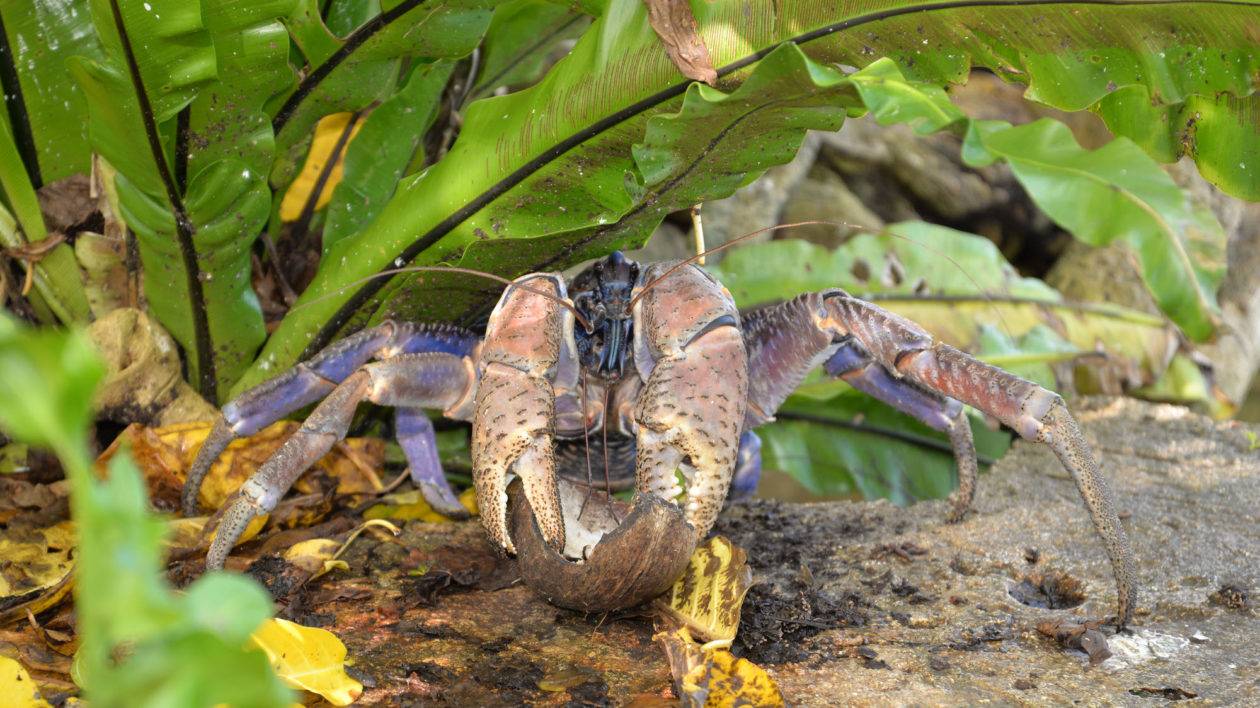
Coconut crabs are found widely in coastal habitats around the Pacific and Indian oceans. In many parts of their range, populations are declining. As reported this year in Mongabay, in some areas, coconut crabs have disappeared completely.
The crabs face a predictable litany of threats. Coconut crabs always live near the coast, often in forest habitats – areas that are often developed. Additionally, people eat coconut crabs so they are vulnerable to overharvesting. On many Pacific islands, they’re a difficult species to see.
That’s not the case on Palmyra. In fact, it’s easier to see coconut crabs than even a few years ago – thanks to a great conservation success.
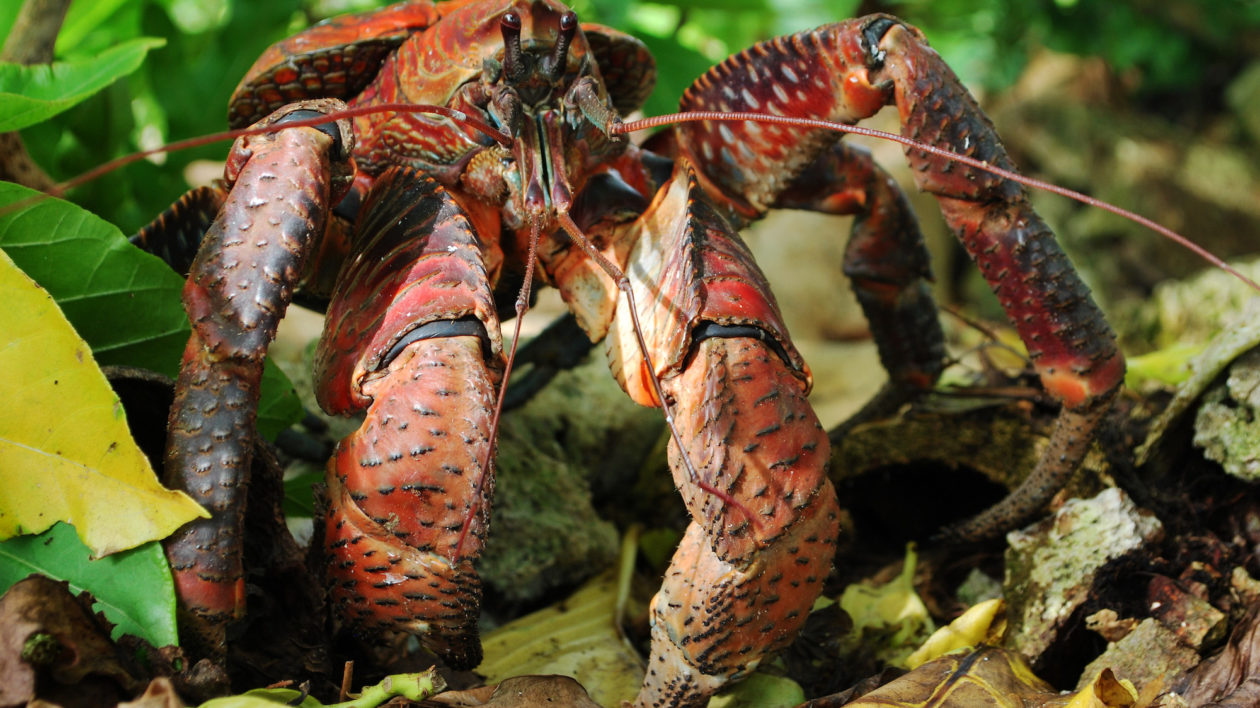
Top 10 Largest Crabs In The World
FAQ
What is the largest crab ever found?
1. Japanese Spider Crab
Recognizable by its long, spindly legs spanning more than 13 feet (4 meters), it boasts a carapace up to 15 inches (37 cm) wide and can weigh 40 pounds (18 kg). Its body is typically adorned with algae and marine organisms, providing camouflage in its natural habitat.
What’s bigger, king crab or dungeness crab?
King crabs are much larger than Dungeness crabs, with some weighing up to 20 pounds and having a leg span of over five feet. Their spiny, reddish-orange shells and long, robust legs give them a majestic and formidable appearance.
Is colossal crab bigger than king crab?
Jumbo: Jumbo king crab legs are the largest option available. They typically measure around 1 1/4 to 2 pounds per leg and are perfect for sharing between two or more people. Colossal: Colossal king crab legs are similar in size to jumbo, but they’re even larger.
Is the coconut crab the biggest crab?
They’re not quite the world’s largest crab – that would be the Japanese spider crab, Macrocheira kaempferi, which can reach a whopping 3.7 metres from claw to claw. But the coconut crab is the largest crustacean that spends all its adult life on land, with a Guinness World Record opens in a new window to prove it.
